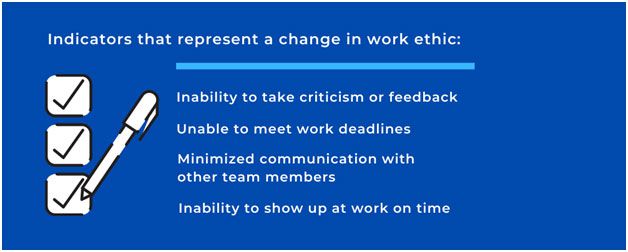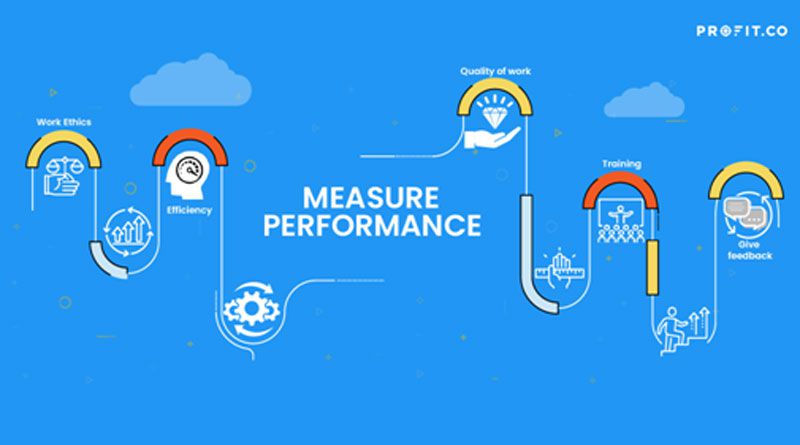Successful companies emphasize timely and regular assessment of employee performance to ensure that the business is meeting its goals. That’s because employee performance is directly linked with the productivity of a business, in terms of both revenue and profits.
However, some businesses have a difficult time identifying the right performance KPIs to measure their employees’ productivity. They simply don’t know which variables will give them a comprehensive view of employee performance in the workplace.
Identifying the right productivity metrics to measure employee performance can help employers evaluate their overall ROI. Additionally, identifying the right metrics can also give insights into employee learning and development needs. This way, you can use available resources accordingly to cater to each individual’s needs, and in extension, the needs of the company.
It is also essential to consider your goals, your industry, and your particular brand before deciding on how to measure employee performances. The good news is that there are dozens of metrics you can use to assess employees. However, the following are considered the most important competencies by businesses around the globe:
- Work Ethic
- Efficiency
- Quality of work
1. Work Ethic: The Most Valuable Attribute
Work ethic is a valuable attribute to measure when checking employee performance. Employees with an excellent work ethic can boost the company’s performance with their efficiency and work management. A strong work ethic is reflective of discipline, dedication, productivity, and hard work.
It is essential for managers to be aware of how their employees are performing and whether their work ethic aligns with the company’s expectations.
How is work ethic measured?
Managers and team leaders can use information regarding their employee’s time management skills and the number of tasks they can complete in a given time to evaluate their motivational drive and passion for the job.
Examining work ethic will also make it clear to managers if their employees need additional incentives to complete their job.
If an employee who has usually been very consistent and punctual with his deadlines is suddenly showing up late to work or taking more leaves than usual, the chances are that they are not working to their full potential. These are a few indicators that represent a change in work ethic:
- Inability to take criticism or performance review comments
- Unable to meet work deadlines
- Minimized communication with other team members
- Inability to show up at work on time

How To Improve Work Ethic
In all of the cases discussed above, it is advisable to:
- Offer training sessions to make sure employees understand the core ethics and values of the business
- Conduct one-on-one sessions with your workers to figure out what exactly it is that’s affecting their work performance, in case of a lack of motivation and efficiency
- Strengthen the rapport between business leaders and their teams to tell if someone is dealing with stress
These issues are usually the culprits behind a decrease in work productivity, engagement, and daily functioning. Supportive performance management that focuses on building trust and understanding not only contributes to the employee’s well-being but also enhances workplace culture. This, in turn, boosts the productivity of the organization as a whole.
You can choose some performance KPIs for your organization, such as the Employee Satisfaction Index (ESI). The ESI gives you valuable insight into what makes your employees happy and what could make them even happier, that’s true, but it offers something more than that: a glance into each of your employees’ personality.
Employee referrals are considered to be one of the most productive recruiting strategies. The Internal Referral Hires Rate helps managers see the value that is added to the company when existing employees help identify talents. If employees refer successfully, they feel a sense of achievement, like they’ve done something good for you and the company. They are also usually more engaged than other employees.
The New Hire 90-Day Failure Rate is a Human Resources metric that’s used by businesses and companies in order to determine the percentage of new employees that leave the company in a set time period – in this case, in 90 days. This is an important metric as it can be used to determine how efficient the talent acquisition process is and how good the HR team is at finding the right person for the right job.
The right performance KPIs can help you track Objectives & Key Results to improve employee performance in your organization. What is OKR?
Objectives and Key Results, or OKR, is a goal-setting framework that comprises an Objective, or an ambitious, memorable goal statement, and key results, or key outcomes that, when completed, will confirm that the objective has been achieved. Key results are often measured with KPIs.
We can set up an OKR to improve work ethic and measure its impact on employee performance. Here’s an OKR example using this performance KPI:
OKR for improving work ethic:
Objective: Build an amazing organizational work ethic
KR1: Increase number of internal referrals from 10 to 20
KR2: Roll out actions for improvement based on previous Quarter’s ESI score
KR3: Maintain the new hire 90 day failure rate to be less than 3
2. Efficiency: A Key Attribute For Success
For your organization to function successfully, your team members must be aligned with your corporate goals and targets. This is reflected in the efficiency with which employees conduct their tasks. Besides, research shows that businesses that prioritize efficiency at the workplace are 21% more profitable.
As long as you know that your people complete their tasks within the given deadline, and know how to prioritize projects, there shouldn’t be a problem. However, if an employee regularly works over-time to complete their work, they are either over-burdened or unable to manage their time efficiently.

How Can Efficiency Be Measured?
While a take-charge attitude is essential, there are other ways to gauge efficiency. See how an employee works within limited resources and if they perform better and faster than others in similar roles. This should also help you set benchmarks for future targets.
For instance, calculating the Employee Productivity Rate. This performance KPI will give you a clear sense of who’s doing their job and who isn’t. Objectives and Key Results can help you track how engaged your employees are with their most important goals. For example, calculating the number of on-time check-ins employees have on their key results shows that they are routinely and consistently on top of their work.
How To Improve Efficiency?
Uncovering the reasons behind poor time management can help solve these efficiency issues. For starters:
- Encourage your employees to de-clutter the space around them and create a distraction-free workspace
- Make sure they plan their tasks clearly to meet their deadlines. Having a clear set of goals can reduce employee burnout
- Have business leaders model the right kind of behavior, i.e., showing up on time for meetings, being courteous and polite, and prioritizing customer care
These are just some of the ideas to boost employee engagement and efficiency in the workplace. Employee Satisfaction Surveys (ESS) are a valuable tool for gauging the overall happiness of your workers.
Another performance KPI that can help you track efficiency is the percentage of workforce below performance standards. This is a measure which keeps tabs on the number of low-performing employees in a specific organization. Your goal is to focus your attention on decreasing this percentage and optimizing your business.
We can set up an Objective and Key Results to improve this attribute and measure its impact on the employee performance. A sample is provided below:
Objective: Improve Employee efficiency
KR1: Ensure number of late check-ins per employee is at most 3 in a quarter
KR2: Ensure 1 ESS is conducted and submitted to the CHRO
KR3: Decrease Percentage of Workforce below Performance Standards to zero
3. Quality Of Work: the ultimate employee attribute
The quality of work produced is a metric that is the hardest to define because it has a lot to do with personal motivation, hard work, and communication skills.
This would include not only your employee’s ability to achieve results but also the path taken to achieve it. You’ll also need to assess the time taken to achieve a particular outcome, the relationship built with the client, and the way it would affect future sales/clientele relationships according to the nature of your business.

For an organization to maintain high levels of quality, it is vital to ensure that there is open communication between team members and team leaders. This goes a long way in ensuring that employees are motivated in the job that they do, and their hard work is rewarded accordingly.
Studies suggest that employees who are motivated and can make a connection between the quality of their work and the company’s goals are far happier, and hence more productive for the business.
How Can It Be Measured?
Since measuring the quality of work is an ongoing process, managers must regularly review employee deliverables. As a manager, you should check if employees are showing consistent improvement in their work, such as incorporating previous feedback and performance review comments. Managers should also make a point to include key performance review phrases in their evaluations to help correct work that is off the mark. Quality of work is significantly improved when employees use out-of-the-box thinking and come up with innovative and creative solutions. Taking ownership of assigned tasks and doing those on time is also an indicator of quality work.
To measure quality of the operations within an organization, metrics specific to that function can be used. For instance, metrics like average time to fill and average time to hire will give insights on the efficiency and the quality of the hiring program led by the talent acquisition team. This Recruitment performance KPI is important for realistic business planning.
How To Ensure A Constant Improvement In Quality Of Work?
Following are some strategies that organizations can use to inspire their workforce and ensure continuous improvements:
- Recognition and positive reinforcement are useful motivational tools that can garner a sense of positivity and inspire the staff to make improvements and strive for greater productivity. Try using verbal praise, a bonus, or the promise of a promotion (should the good work continue) to see quality skyrocket.
- If your people learn to get regular feedback, whether it’s positive or negative, they learn to appreciate your expertise and look forward to it. They understand that their employers are interested and involved in every aspect of the work that they do.
- Holding training sessions and team-building workshops can help employees form a bond with their team members. Such events are also an opportunity for them to get to know their bosses, making leaders seem approachable to employees.
This leads to a healthy work balance that ensures feedback is delivered, and improvements are made at every stage, resulting in a higher quality of work. There is no doubt that employee motivation is reflected in the quality of work that they produce.
We can set up Objectives and Key Results to improve this attribute and measure its impact on the employee performance. A sample for encouraging high-quality work from the recruitment team is provided below:
Objective: Create a formidable organization with high-quality employee performance
KR1: Maintain employee turnover rate at less than 3%
KR2: Increase average tenure of employees by 80%
KR3: Decrease average time to hire from 45 days to 30 days
Using These Metrics in Performance Reviews
While OKRs and Performance Reviews should never be tied together, there is some cross-over considering that OKRs address the top priorities of the organization, and performance reviews evaluate employees based on the most important aspects of the employee’s job.
Employee evaluations are usually structured as a review and a conversation. During the review, a manager might rate certain attributes or competencies that the employee needs to possess in their job. In the conversation portion of the review, the manager should bring up these competencies. This is where a discussion about work ethic, efficiency, or quality of work might come up.
During the conversation portion of a review, managers should keep these competencies in mind. If an employee performed outstandingly, the manager should tailor their performance review comments to address that. Comments that praise work, and encourage similar behaviors, help show the employee they’re on the right track.
The same logic applies to areas where an employee underperformed or struggled. These conversations should be handled carefully by the manager. It’s a good idea to have some key performance review phrases on hand that gently critique the employee in a way that doesn’t harm their work ethic or engagement and instead gets them back on track.
Final Thoughts
Finding the right performance KPIs for your organization can be difficult. However, these three competency categories are without a doubt the most important areas to monitor. When you know how to measure employee performance, you can better improve employee performance in your organization.
Combining the right performance KPIs with Objectives and Key Results can result in amazing
improvements for your team!

In his current role of Marketing Manager, Profit.co, he leads the Digital Marketing Team. He has a decade of experience in Project management, Operation Excellence Consulting, and Digital Marketing. He is passionate about creating new approaches to brand awareness, and demand generation. He is passionate about learning new technologies, and strategies in marketing and deploying them in his organization. He is also an avid traveler and a biker who has traveled almost 7000 miles in a year.

